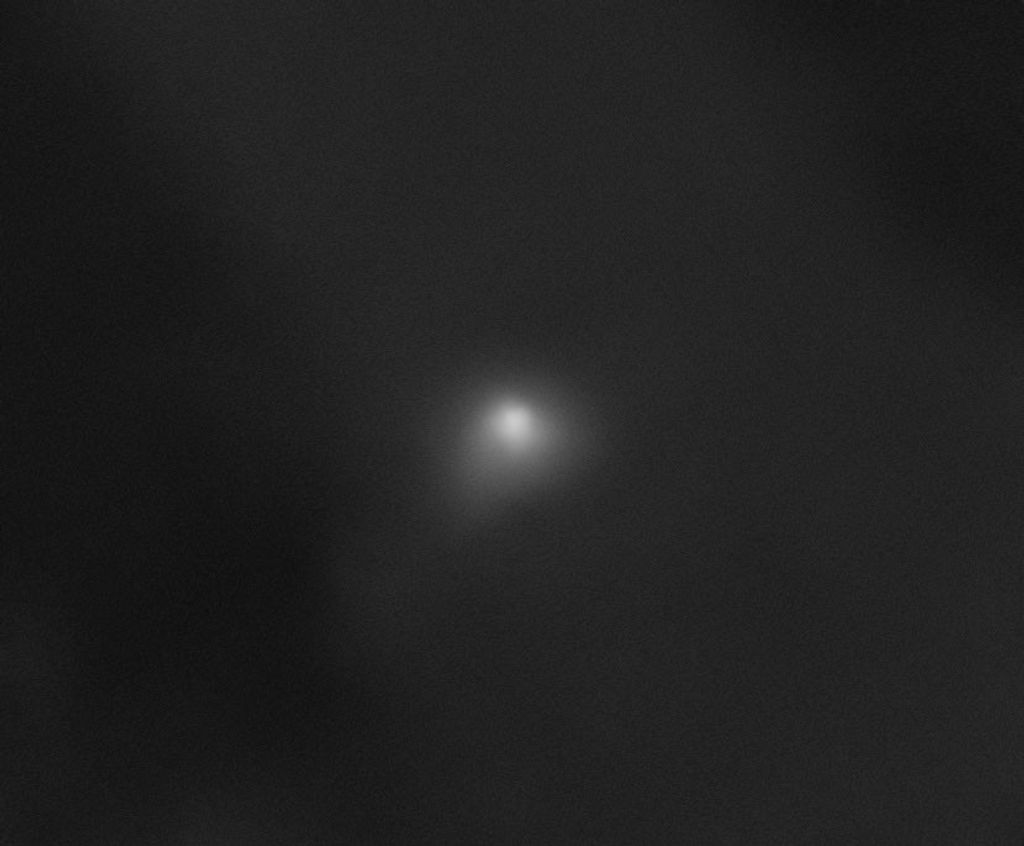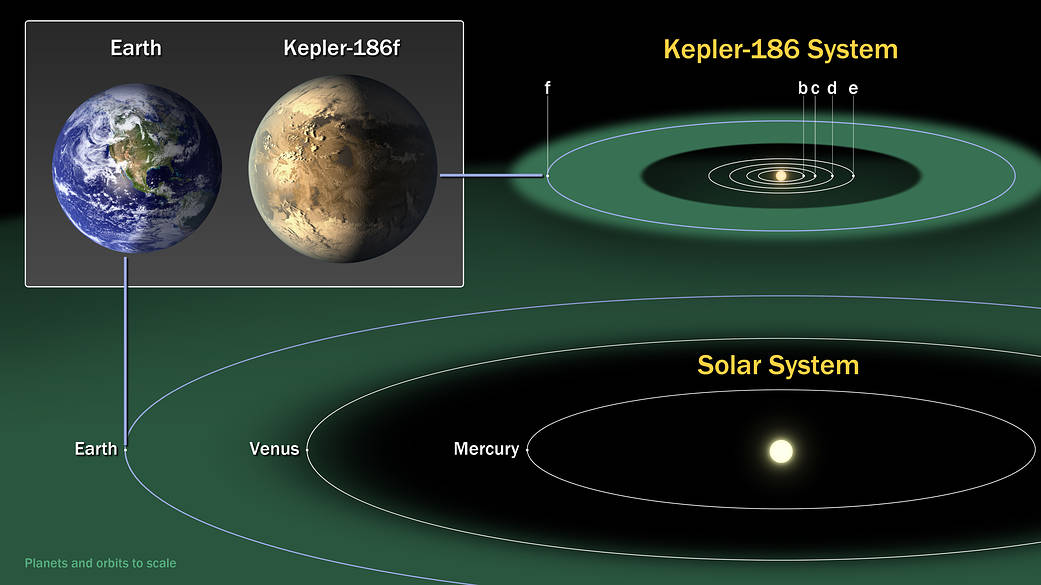The diagram compares the planets of our inner solar system to Kepler-186, a five-planet star system about 500 light-years from Earth in the constellation Cygnus. The five planets of Kepler-186 orbit an M dwarf, a star that is half the size and mass of the sun.
The Kepler-186 system is home to Kepler-186f, the first validated Earth-size planet orbiting a distant star in the habitable zone—a range of distance from a star where liquid water might pool on the planet’s surface. The discovery of Kepler-186f confirms that Earth-size planets exist in the habitable zones of other stars and signals a significant step toward finding a world similar to Earth.
The size of Kepler-186f is known to be less ten percent larger than Earth, but its mass and composition are not known. Kepler-186f orbits its star once every 130 days, receiving one-third the heat energy that Earth does from the sun. This places the planet near the outer edge of the habitable zone.
The inner four companion planets each measure less than fifty percent the size of Earth. Kepler-186b, Kepler-186c, Kepler-186d and Kepler-186, orbit every 4, 7, 13 and 22 days, respectively, making them very hot and inhospitable for life as we know it.
The Kepler space telescope infers the existence of a planet by the amount of starlight blocked when it passes in front of its star. From these data, a planet’s radius, orbital period and the amount of energy recieved from the host star can be determined.
The artistic concept of Kepler-186f is the result of scientists and artists collaborating to imagine the appearance of these distant worlds.




























